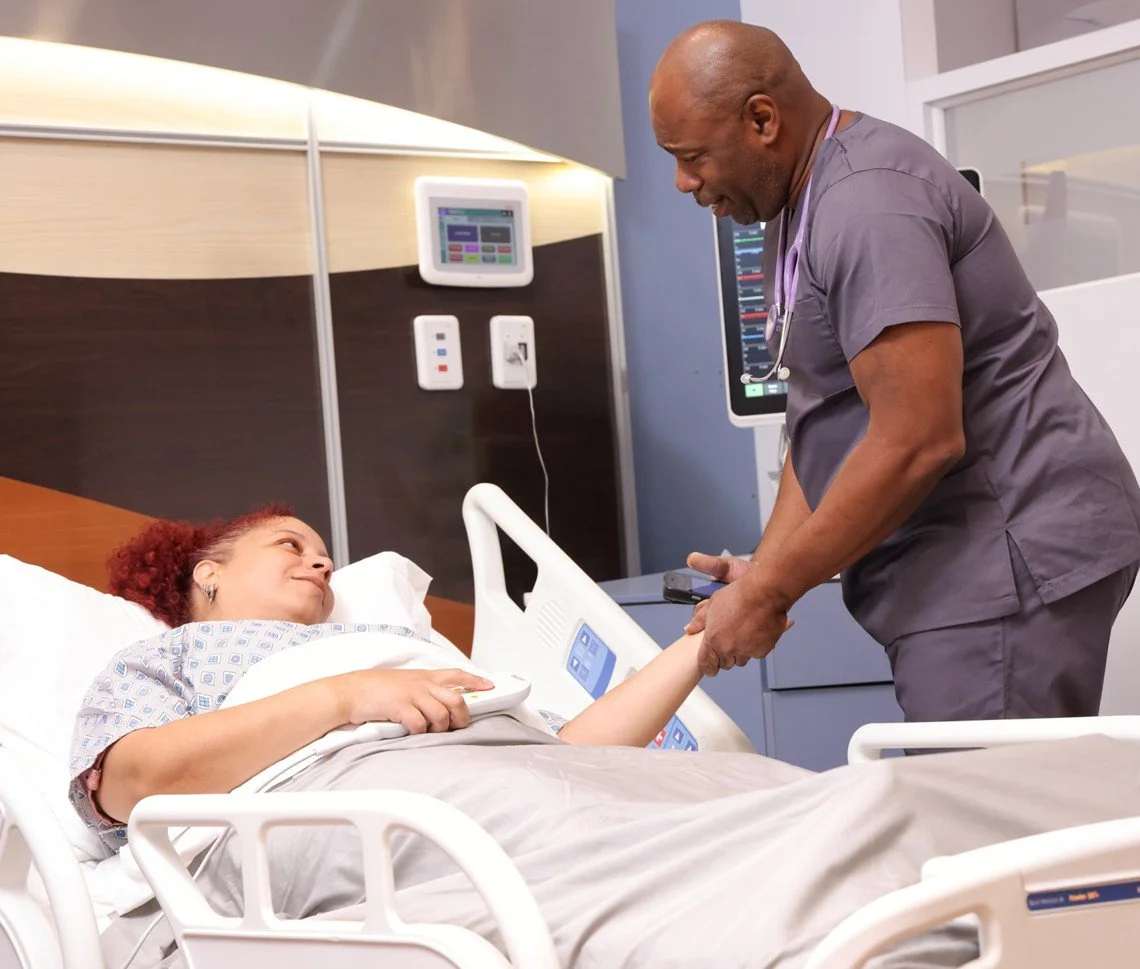4 Ways Hospitals Are Using RTLS To Transform Care
Real-Time Locating Systems (RTLS) are reshaping hospital operations in ways that extend far beyond asset tracking. The core of this shift is a data infrastructure that strengthens safety, uncovers hidden inefficiencies, enables process experimentation, and eliminates equipment guesswork.
Hospitals integrating RTLS into their care environments are making measurable gains in efficiency, accountability, and clinical responsiveness. Below are four advanced applications of RTLS that are changing the way healthcare is delivered.
1. Automating safety protocols
Manual rounding logs and badge sign-ins make safety protocols harder to enforce, especially under pressure. RTLS introduces automation to safety workflows, enabling faster incident response and more reliable compliance monitoring.
Behavioral health units, for example, have deployed location-aware badges that send precise duress alerts. These alerts route automatically to the appropriate security or clinical teams, reducing response times and improving staff confidence.
Emergency departments often operate at peak intensity, where rapid response to staff safety concerns can mean the difference between escalation and de-escalation. RTLS-enabled duress badges allow personnel to discreetly signal for help without leaving a patient’s side. These alerts trigger location-based responses in real time, enabling security teams to reach staff quickly — even in dynamic, high-risk environments.
2. Surfacing workflow inefficiencies in real time
Bottlenecks can’t be fixed if they aren’t seen. RTLS uncovers the micro-delays that degrade throughput and impact patient experience, especially in high-turnover environments like emergency departments and outpatient imaging.
Hospital administrators now use RTLS to timestamp the full patient journey, revealing delay patterns in transport, prep, and room turnover. Those insights support reallocation of staff, redesign of physical spaces, or optimization of handoffs between departments.
Some hospitals have redesigned supply rooms after tracking repeated nurse movements across long corridors. These changes have reduced unnecessary walking and freed up time for patient care without increasing headcount or extending shifts.
3. Using real-time data for continuous process improvement
Real-time insights empower clinical and operations teams to run controlled improvement experiments and measure the outcomes with precision. Hospitals are no longer waiting for quarterly audits to evaluate performance.
When a hospital wants to reduce room turnover time, RTLS data reveals the time between patient discharge, EVS dispatch, cleaning, and patient-ready status. Adjustments to dispatch rules or notifications can be implemented and tested within days.
Systems that document time-to-treatment for high-acuity conditions also benefit. Door-to-balloon time, first-dose antibiotic timing, and other critical metrics can be validated using real-time location data. Audit trails gain granularity, allowing hospitals to improve not just results, but the processes that lead to them.
4. Managing mobile assets more intelligently
Equipment that isn’t where it’s needed results in delays, double orders, and unnecessary rentals. RTLS reduces search time, eliminates asset hoarding, and ensures the right tools are available for the right procedures.
Technicians and nurses can see which IV pumps, telemetry monitors, or wheelchairs are nearby and available. Status indicators show whether a device is in use, idle, or awaiting cleaning, improving utilization and turnaround.
These location-based insights reduce the risk of underutilization, hoarding, and emergency rentals — common issues that drive up costs in acute care settings. Hospitals using RTLS to track IV pumps and similar mobile equipment have reported measurable ROI through fewer unnecessary purchases and reduced staff search time.
Maintenance teams gain similar visibility. Preventive service schedules become easier to enforce when tagged assets can be located without interrupting clinical workflows. This visibility supports compliance with the Joint Commission and CMS standards without adding administrative steps.
A system that touches every layer of hospital performance
Every RTLS application — whether safety, workflow, process improvement, or asset tracking — supports operational excellence through precise, location-aware data. Decision-making becomes faster and more accurate. Frontline teams gain transparency. Administrative leaders gain clarity.
Hospitals that integrate RTLS into staffing models, leadership KPIs, and quality dashboards experience stronger returns on investment. Of course, technology alone doesn’t transform care. The difference lies in how the data is applied.
Are you ready to explore how RTLS can transform your facility? Contact the experts at trlsystems.com/solutions-healthcare to schedule a consultation today.



